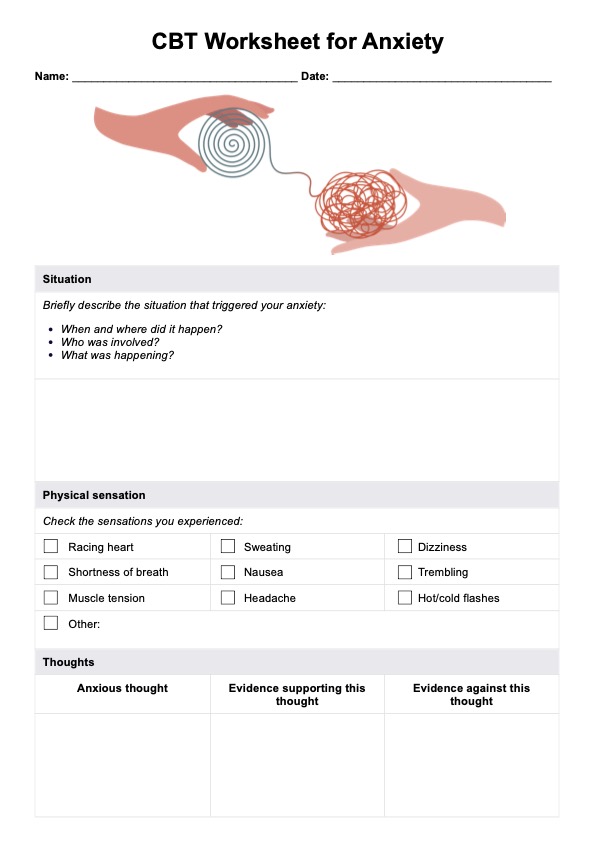People can use these worksheets whenever they are experiencing anxiety symptoms, such as excessive worry, fear, or nervousness. They can be used in a variety of settings, such as therapy sessions, classrooms, or at home.

CBT Worksheet for Anxiety
Access an engaging CBT Worksheet for Anxiety to support clients in finding relief and improving their well-being.
CBT Worksheet for Anxiety Template
Commonly asked questions
CBT homework typically involves structured activities assigned by a therapist to reinforce learning and promote change outside of therapy sessions. These assignments may include self-monitoring exercises, such as tracking thoughts and feelings, behavioral experiments to test negative beliefs, or practicing cognitive restructuring techniques like identifying and challenging distorted thoughts.
The most effective CBT techniques for anxiety often include cognitive restructuring to challenge and modify anxious thoughts, exposure therapy to gradually confront feared situations or stimuli, and relaxation techniques like deep breathing or progressive muscle relaxation to manage physical symptoms of anxiety. Additionally, behavioral experiments help test the validity of anxious predictions, while problem-solving skills training can address specific stressors contributing to anxiety.
EHR and practice management software
Get started for free
*No credit card required
Free
$0/usd
Unlimited clients
Telehealth
1GB of storage
Client portal text
Automated billing and online payments











